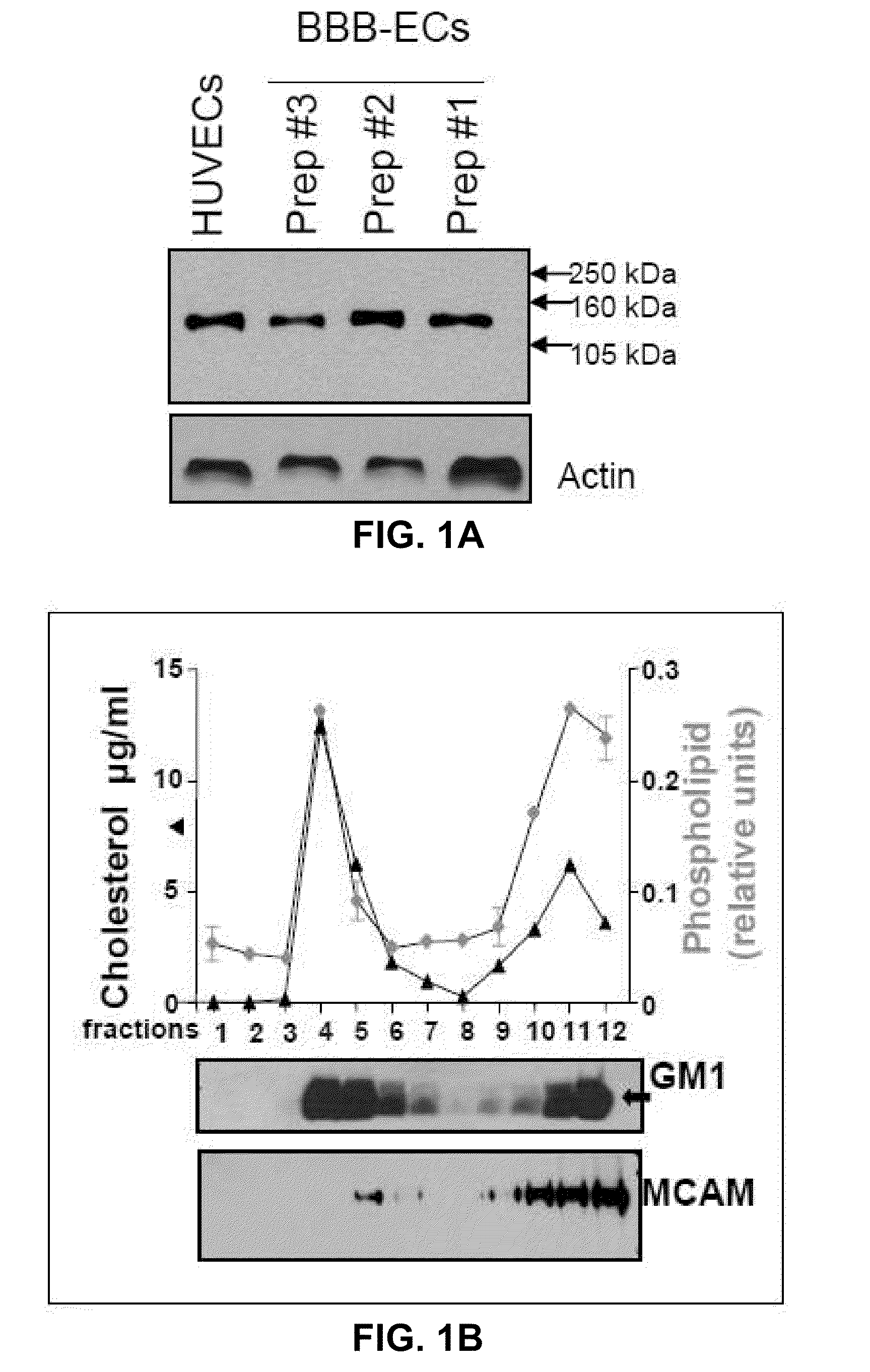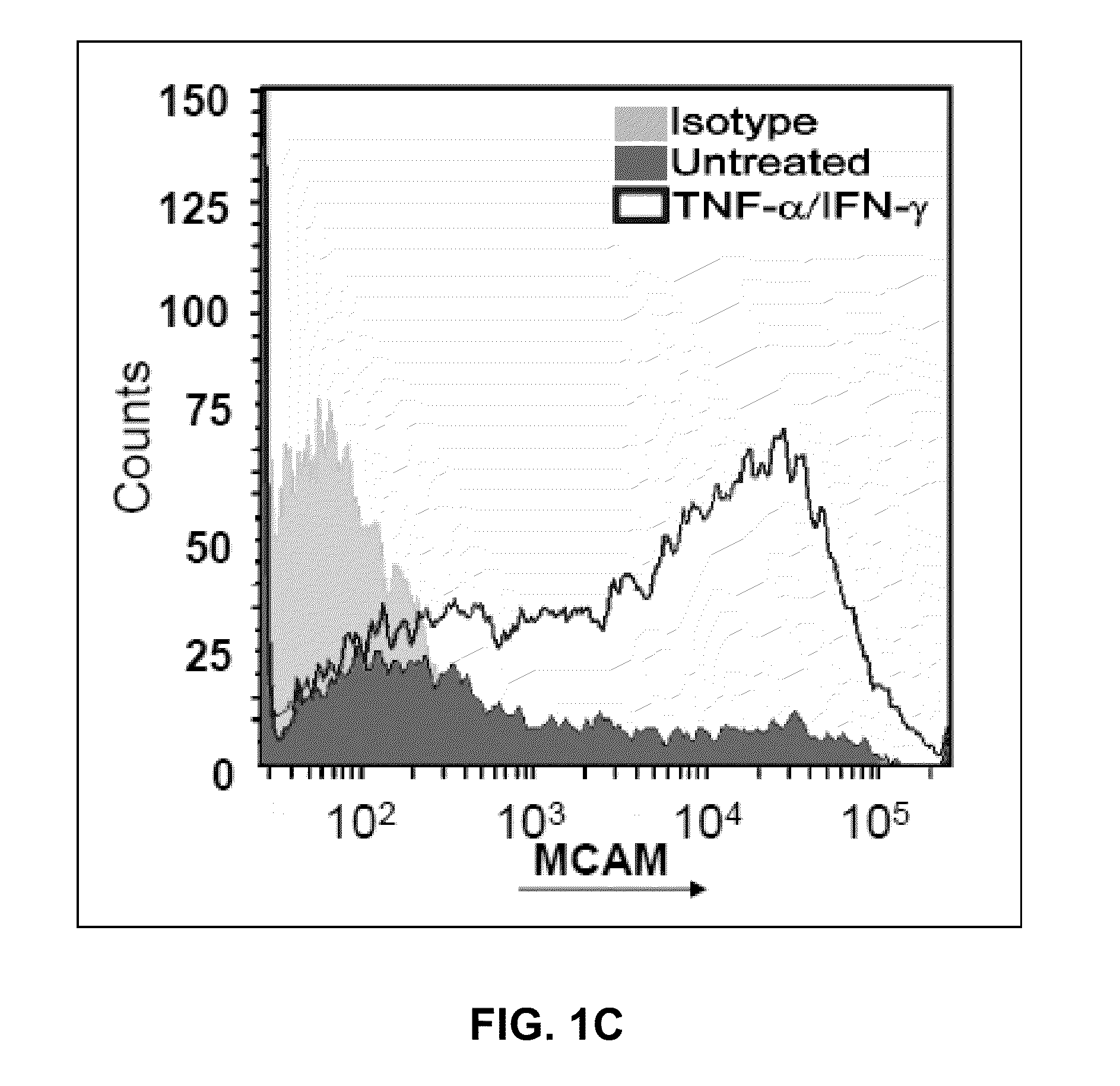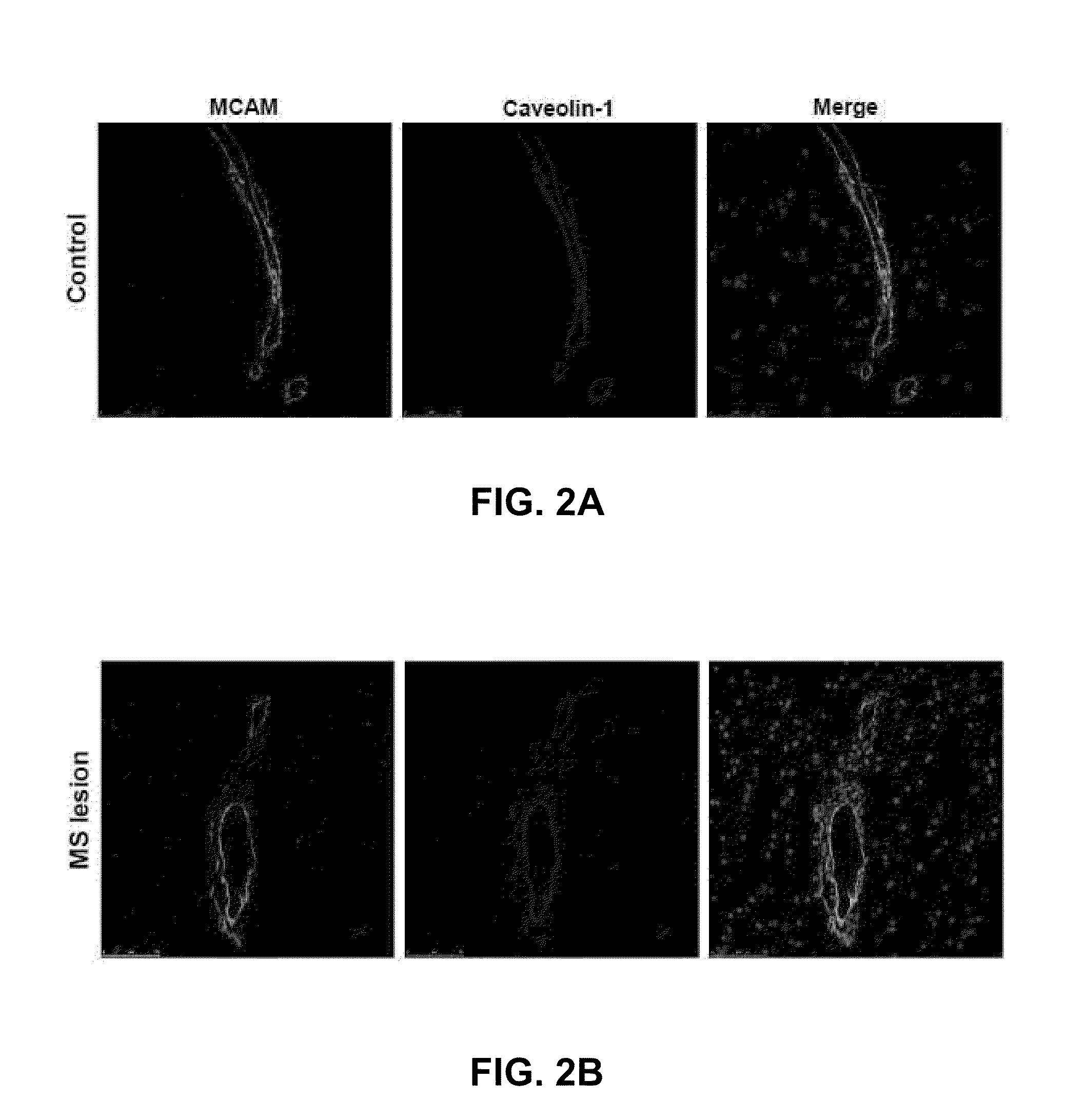MCAM modulation and uses thereof
a technology of melanoma cells and mcams, applied in the field of melanoma cell adhesion molecules, can solve the problems of reducing the responsiveness to corticosteroids, adrenal suppression, cardiovascular collapse and arrhythmias, and reducing the rate of clinical relaps
- Summary
- Abstract
- Description
- Claims
- Application Information
AI Technical Summary
Benefits of technology
Problems solved by technology
Method used
Image
Examples
example 1
Materials and Methods
[0185]Patients and sample collection. All MS patients were observed at the CHUM-Notre-Dame Hospital MS clinic and diagnosed according to the McDonald criteria. Human peripheral blood (PB) was collected from MS patients and from healthy donors. PB mononuclear cells were obtained from heparinized whole blood using Ficoll™ density gradient separation (Amersham Biosciences, Baie D'Urfé, Quebec, Canada). CD14+ monocytes, CD4+ CD45RO+ lymphocytes and MCAM+ T cells were isolated using the magnetic cell sorting (MACS™) isolation columns, according to manufacturer's protocol (Miltenyi, Auburn, Calif.).
[0186]BBB-endothelial cell isolation and culture. BBB-endothelial cells were isolated from non-epileptic material according to a previously published protocol ((Prat et al., J Neuropathol Exp Neurol. 2000 59(10):896-906; Biernacki et al., J Neuropathol Exp Neurol. 2001 60(12): 1127-36; Prat et al., Arch Neurol. 2002 59(3): 391-7; Kebir et al. Nat Med. 2007 13(10):1173-5. Ep...
example 2
Expression of MCAM in Human BBB-Endothelial Cells and Blood Cells
[0197]The expression of MCAM (melanoma cell adhesion molecule / CD146) on BBB-ECs was studied in vitro and in situ. MCAM is expressed by BBB-ECs in vitro (primary cultures of human BBB-ECs) and in situ (in control and MS patient archival autopsy central nervous system samples) (FIGS. 1A-B and2A-B). In vitro MCAM expression was shown to be up-regulated with inflammatory cytokine treatment (TNF-α and IFN-γ, 100 U / ml for 16 hours), as shown in FIG. 1C. In situ expression of MCAM on CNS vessels is strong and did not vary significantly between control vessels, MS normal appearing white matter, and active MS lesions (FIGS. 2A and B). Using BBB-ECs in culture as a monolayer with isolated human lymphocytes from the peripheral blood (PB) of healthy controls, it was shown that adherent lymphocytes are surrounded by a MCAM+ ring-like structure that is reminiscent of a transmigratory cup, a structure involved in leukocyte diapedesis...
example 3
Expression of MCAM on Human T Lymphocytes
[0198]The expression of MCAM on human peripheral blood immune cells was assessed (FIG. 4A-F). A sub-group of human peripheral blood CD4+ and CD8+ T lymphocytes express MCAM. The different leukocyte markers that were associated with the MCAM+ lymphocytes was assessed and it was demonstrated that MCAM+ lymphocytes express certain markers (CD2, CD3, CD6, CD45RO, CD161, CCR6 and CD28, for example) and were less associated, if they express at all, with other markers (CD45RA, CCD56, CD62L, and CCR7, for example) (FIG. 4A-F). These studies demonstrate MCAM+ is expressed by T lymphocytes having a memory phenotype. These cells express very little cytokines ex vivo (as assessed by intracellular FACS staining), comparable to MCAM− T lymphocytes of the human peripheral blood.
PUM
| Property | Measurement | Unit |
|---|---|---|
| concentration | aaaaa | aaaaa |
| pH | aaaaa | aaaaa |
| pH | aaaaa | aaaaa |
Abstract
Description
Claims
Application Information
 Login to View More
Login to View More - R&D
- Intellectual Property
- Life Sciences
- Materials
- Tech Scout
- Unparalleled Data Quality
- Higher Quality Content
- 60% Fewer Hallucinations
Browse by: Latest US Patents, China's latest patents, Technical Efficacy Thesaurus, Application Domain, Technology Topic, Popular Technical Reports.
© 2025 PatSnap. All rights reserved.Legal|Privacy policy|Modern Slavery Act Transparency Statement|Sitemap|About US| Contact US: help@patsnap.com



